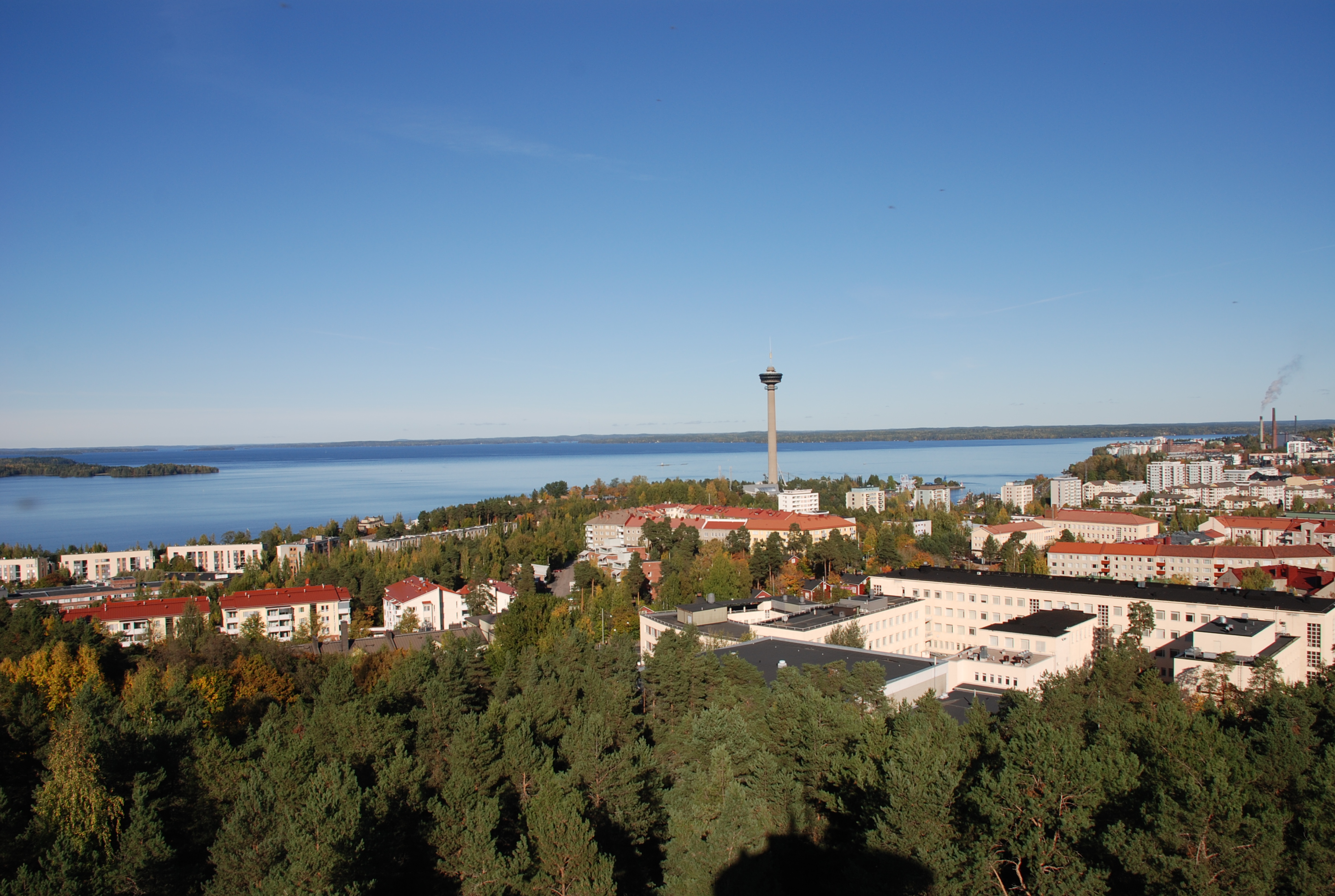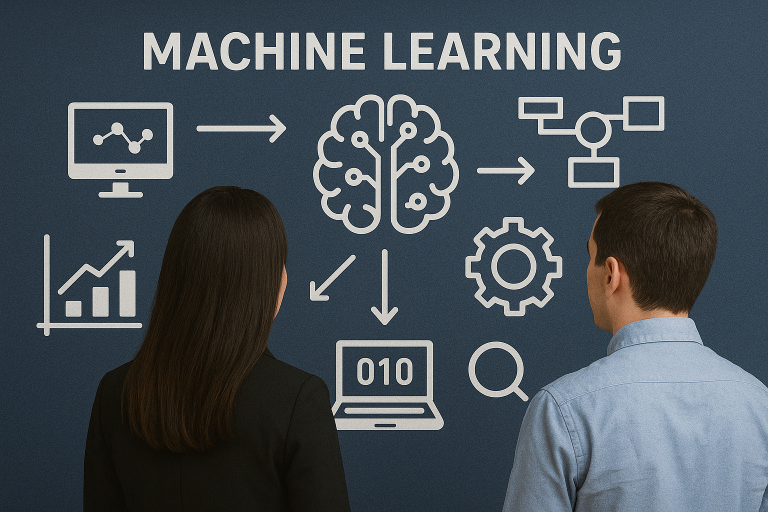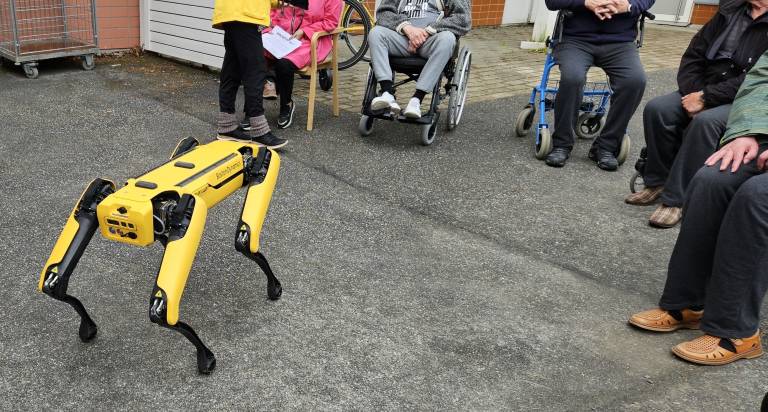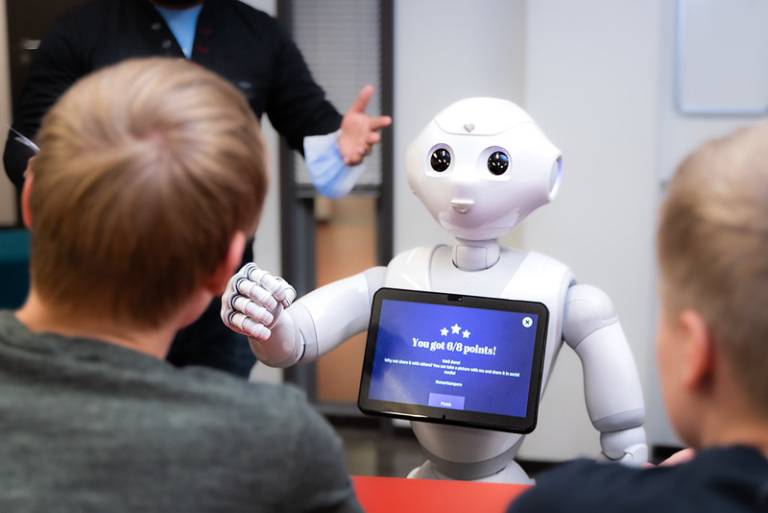AI Hub Tampere collaborated with Ceterio Oy and Tuomi Logistiikka Oy to conduct a pilot study to understand how the medicine transportation robot integrates into the hospital’s daily operations and how people perceive and interact with it. We also wanted to study if the robot’s interface is easy to use for users. To find the answers, we conducted two-day long contextual inquiry during the robot’s test phase at the hospital.
A Glimpse into the Study
The research involved in-depth observation of a selected group of users, which included logistics personnel. Additionally, the study paid attention to the reactions of “by-passers,” mainly logistics staff, who encountered the robot during its operations. Group interviews with logistics staff further enriched the understanding of their acceptance of the robot and its potential future interactions.
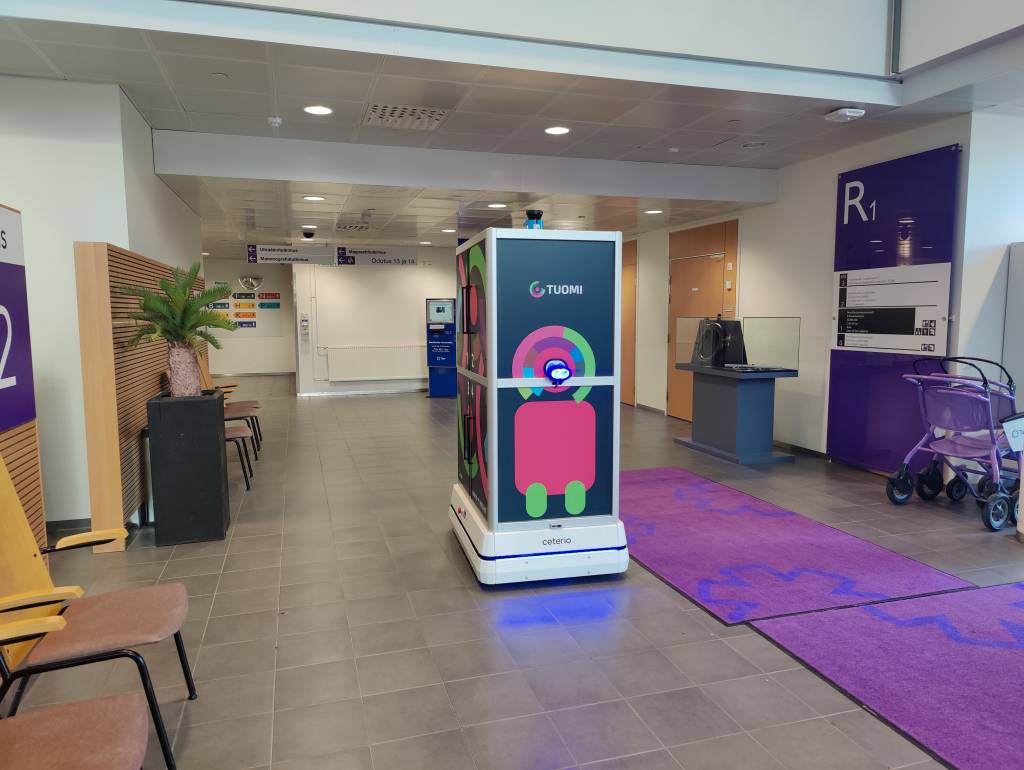
Observations & Discoveries
The observations during the study were both eye-opening and thought-provoking. Here are some key takeaways:
Acceptance: Despite some uncertainties, for example, about where the robot was about to turn, the hospital staff and logistics employees were eagerly anticipating such technology. They believed that it could significantly assist them in their daily tasks.
Expectations: Participants had several expectations. They noted that communication from the robot, especially regarding turning signals and priority, could be clearer. Additionally, they expressed a desire for established traffic rules when humans and robots shared the same corridor. Moreover, clear guidelines on emergency situations seemed to be essential.
Social Interaction: Interestingly, the robot’s presence evoked a range of reactions from people. Some were curious, while others were simply amazed by its capabilities.
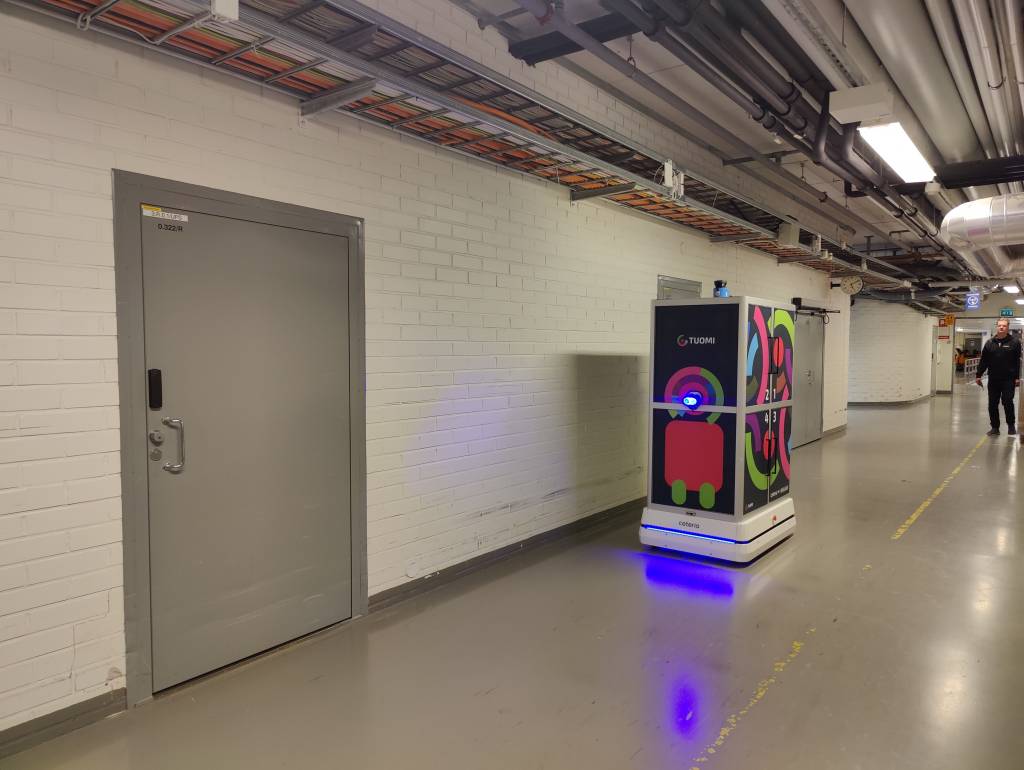
Future Possibilities
We learned a lot from this pilot. We learnt that users want to establish a better communication with the robot. For example, it could tell people when it has the priority when travelling though corridors or if something is wrong when it encounters error. To our surprise, one pilot participant thought the robot could be designed to be more friendly and playful. One participant even had suggestions for names that rhyme with “tuomi,” for the robot.
In the end, findings from our study with Ceterio, Tuomi and TAYS Hospital concluded that robots could become our helpful buddies in the hospital, making things easier and more interesting for everyone. In the future, you might even see a robot walking with patients!
Cheers, Apa, Aino, Val, Mina and Vero from Robostudio

